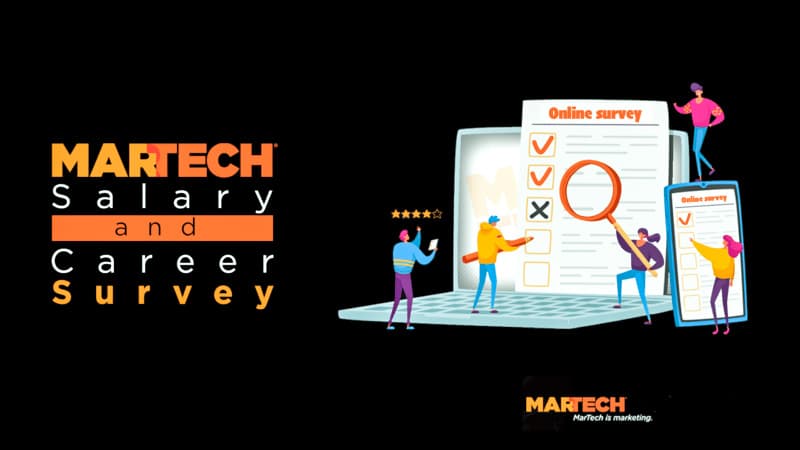Does this tune sound familiar? “Experienced McCMO got a new job, AI-AI-O. And in that job, is a CEO, AI-AI-O. With an AI-here and an AI-there, where is my AI, here is my AI, everywhere is AI. Experienced McCMO got a new job, AI-AI-O.”
I’ve been hearing it a lot lately and so have many marketers I’ve spoken to. A common refrain from thought leaders is that marketers need to get up to speed on AI as quickly as possible and that it’s not going to be a differentiator for your marketing department, but instead, table stakes.
The problem is the CMOs and CEOs who are demanding their marketing teams leverage AI have no idea what problems AI would solve for those teams and no idea how it fits into their existing marketing strategies or technology stack. They also don’t realize that there are other, more foundational problems that their marketers are facing that would have a bigger impact on their marketing and business success than trying to chase down the hairy beast of AI.
This is the same problem companies faced when CMOs started hiring data scientists a few years ago when the data scientists quickly discovered that the CMO had no idea what problems the models were solving, and the data itself needed herculean engineering before models could even be built.

Take Martech’s 2024 Salary and Career Survey
From AI to layoffs, it’s been quite a year. We’d like to know how it’s been for you. Please take this short survey so we can have your input on the state of martech salaries and careers.
If you are in a situation where your CEO or CMO is demanding you use AI in your marketing efforts, here are 3 steps you should take to prepare yourself and your team:
1: Identify and agree on problems and use cases for AI
If your CEO/CMO can’t give you a specific problem she wants you to solve with AI, don’t commit to using it. Ask the CEO/CMO why she wants you to use AI? What is it about your current strategy/process/execution that’s not meeting her expectations? Without a clear problem statement and use case, you will be wasting hours in the AI rabbit hole.
Approach the issue this way:
- Start with a problem statement: We are struggling with XYZ.
- Move to a hypothesis: We believe AI will help with this problem by doing ABC for us.
- End with a proposal/promise and results prediction: We will commit to providing resources to AI initiatives to increase a specific KPI by 10%. If the problem is efficiency/workflow related then come up with metrics to indicate what success means.
2: Apply appropriate resources to supporting AI initiatives
Just laid off your entire Marketing Operations team? Now is not the time to jump into AI. If your Marketing Operations team consists of one person, now is not the time to jump into AI. If you have no dedicated analytics, data, or development resources, now is not the time to jump into AI.
This is not to say your content marketing team can’t use AI to write blog posts, but have you created an AI governance policy? Do you have a process to ensure that the content is monitored to ensure quality? If your sole use case is writing blog posts, that’s not really what your CEO/CMO expects when they say “AI will be changing the way companies do marketing.”
Dig deeper: What does the future hold for genAI? The Gartner Hype Cycle
You need someone to evaluate the AI tools in the marketplace, do an RFP or product evaluation, onboard the tools, train the marketing team on how to use AI, and manage the vendor. And don’t forget that just like garbage data will result in garbage models by your data science team, it will also result in garbage AI. You need someone responsible for your data.
If you want to invest in AI, invest in the right operational and technical people who can build a strong foundational data and technology strategy that will support your future AI initiatives.
3: Build a culture where innovation is rewarded and where failure is not penalized
A lot of marketers are afraid of failure, which in turn makes them afraid of taking risks. AI is all about taking risks. It’s risky for a marketer to allocate a percentage of their time or budget to learning about AI because that means less time for their “tried and true” marketing tactics.
It’s risky for a marketer to give away control to the Ops/Technology/Data team who may lead the AI project.
It’s risky for a marketer to invest in something that may someday take away their job.
As a leader, you must communicate to your team the expectations and team norms you expect. Risk-taking should be a norm and a valued behavior. You must also build a culture where failure is not penalized and is instead rewarded. If a test with AI fails, the effort should be rewarded.
If AI is a topic of discussion in your company or department, I hope you will pause and think about whether you are ready for AI and what the likelihood of success is for the AI initiative. Do you have the foundational pieces of your marketing efforts in a condition conducive to AI? If not, start there. And remember, success with AI might start with failure.
The post 3 steps to determine if AI is the answer to your problem appeared first on MarTech.























































![5 Ways to Improve Your LinkedIn Marketing Efforts in 2025 [Infographic] 5 Ways to Improve Your LinkedIn Marketing Efforts in 2025 [Infographic]](https://imgproxy.divecdn.com/Hv-m77iIkXSAtB3IEwA3XAuouMwkZApIeDGDnLy5Yhs/g:ce/rs:fit:770:435/Z3M6Ly9kaXZlc2l0ZS1zdG9yYWdlL2RpdmVpbWFnZS9saW5rZWRpbl9zdHJhdGVneV9pbmZvMi5wbmc=.webp)














